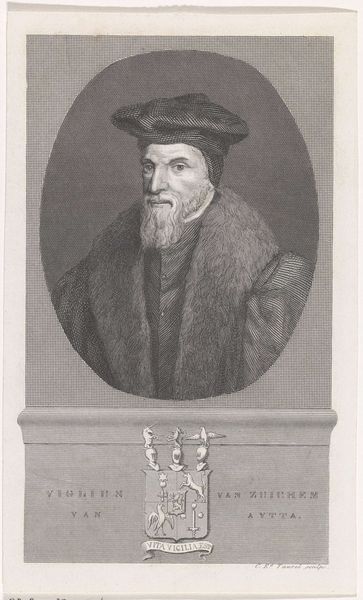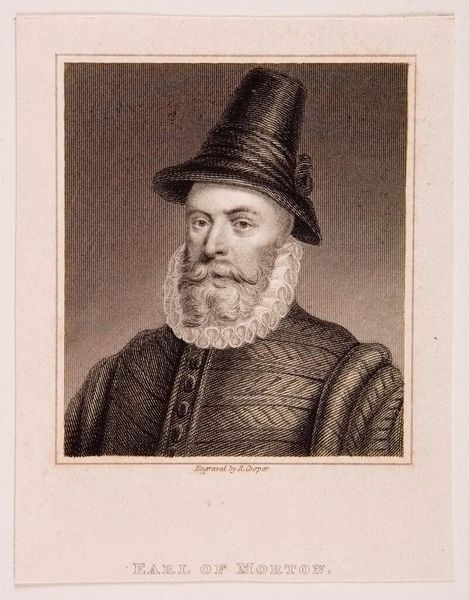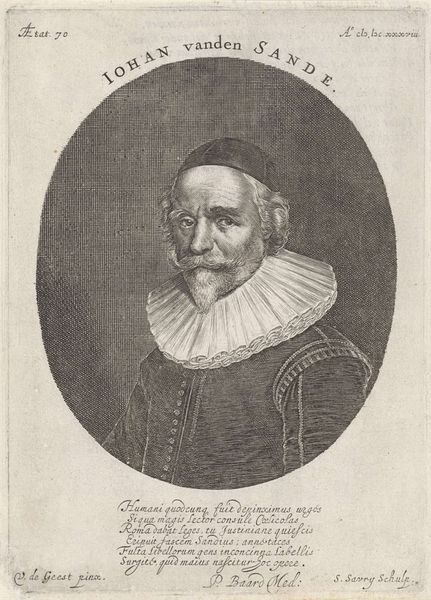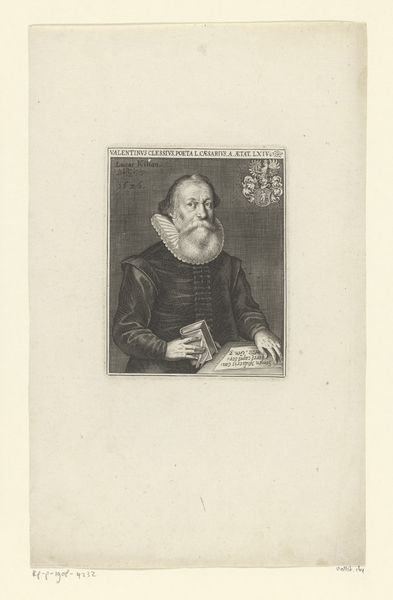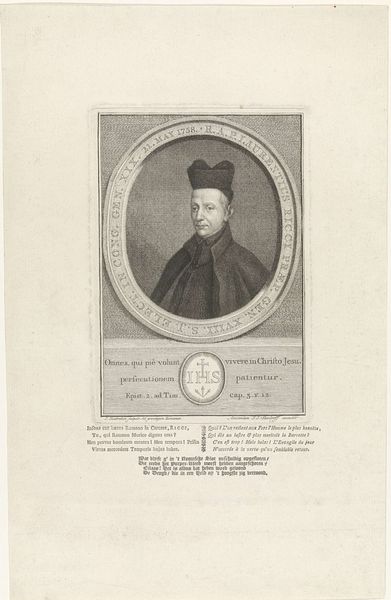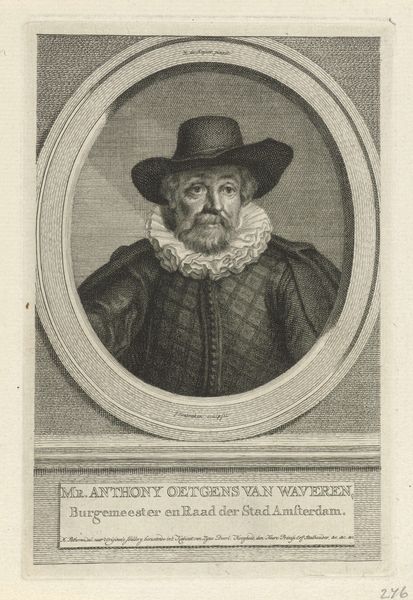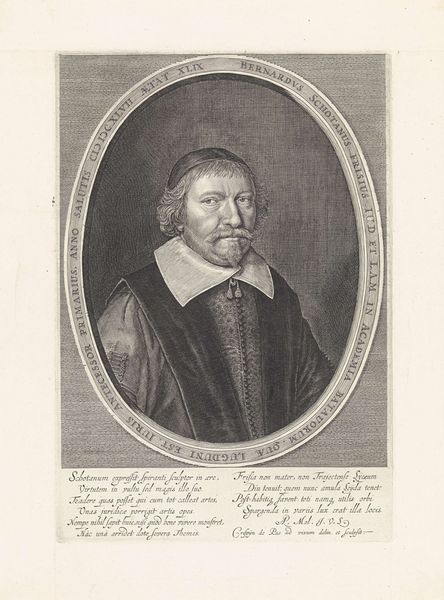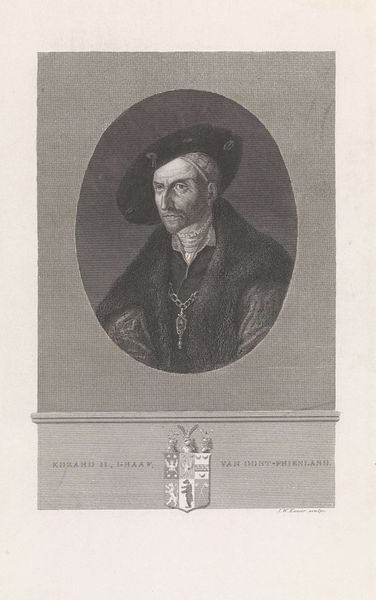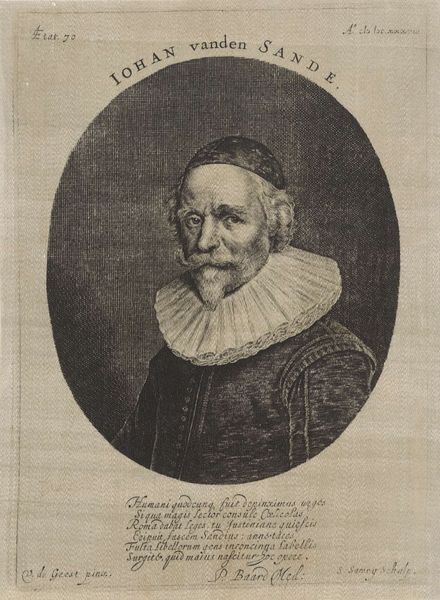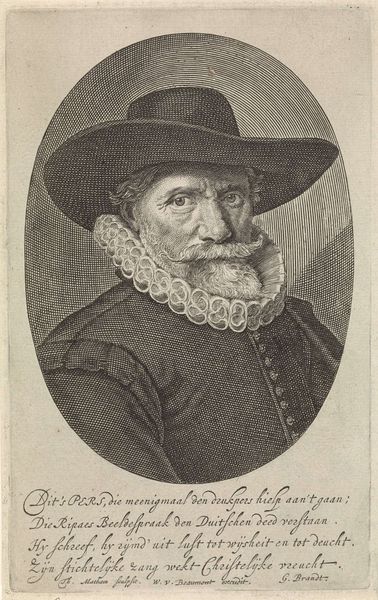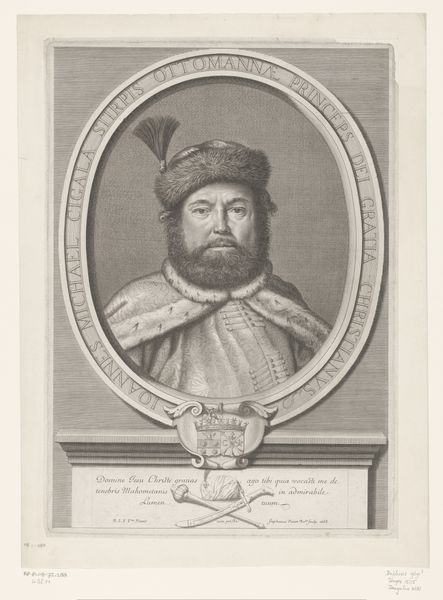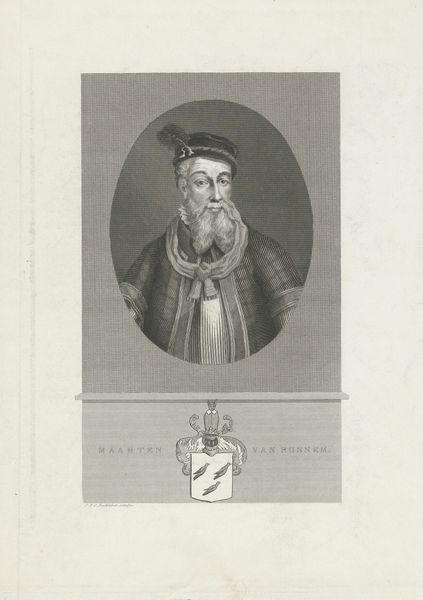
graphic-art, print, engraving
#
portrait
#
graphic-art
#
baroque
# print
#
old engraving style
#
engraving
Dimensions: height 100 mm, width 100 mm
Copyright: Rijks Museum: Open Domain
Curator: Looking at this image, what jumps out at you? Editor: A kind of solemn stillness, despite the busyness of the engraving lines. The monochrome palette lends it a severe air. What can you tell me about this figure? Curator: We are looking at a work by Jacob Houbraken, titled "Portret van James Douglas." Houbraken was active during the 18th century. This piece, rendered as a graphic art print, depicts James Douglas, Earl of Morton and Regent of Scotland. Editor: "Regent of Scotland"... Power clearly marked him. That beard is remarkably stylized; the sharp, symmetrical curls almost mimic a sculpted object. Does that point to something significant about presentations of masculine authority in the 1700s? Curator: Indeed, beards like these signified status. The symmetry you've noted wasn’t just stylistic; it visually linked earthly rulers with ideals of order. Think of the circle that contains the portrait itself; that emphasizes his status. Symbols are about visual messaging and the beard, like a heraldic element, communicated steadfastness. Editor: Did Houbraken make specific choices to flatter his subject, or subtly critique the power Douglas represented? Given the history of Scotland during that period... Curator: Good question! Engravings such as this served purposes both functional and political. Houbraken's choice to emphasize Douglas’s prominent features suggests not criticism but ennoblement. Yet the context also is important because this rendering appeared posthumously and may well signify a level of closure or the memorialization of former regimes and ideals of governance. Editor: So it's a form of cultural remembering and commemoration. That links strongly to our contemporary focus on representation and visual memory. It also reminds us of portraiture's capacity both to solidify power and to incite scrutiny of authority. Curator: Precisely! Visual artifacts like these contain not just aesthetic, but psychological residues of culture. Thank you for lending a modern frame to our visual excavation of these symbols. Editor: And thank you. It is an enriching act to reframe perceptions of cultural symbols in historical works with relevant modern sensibilities and critiques.
Comments
No comments
Be the first to comment and join the conversation on the ultimate creative platform.
